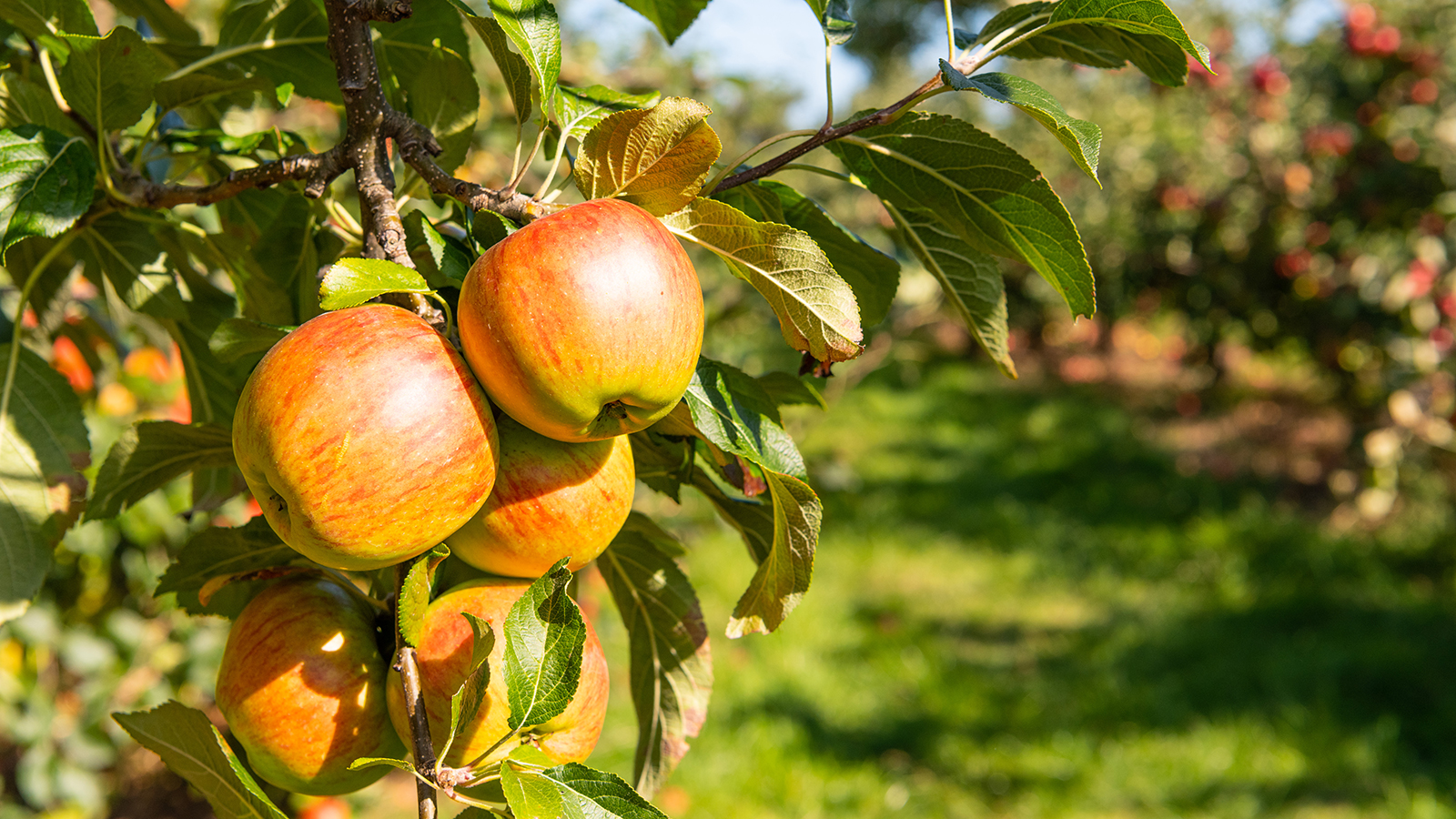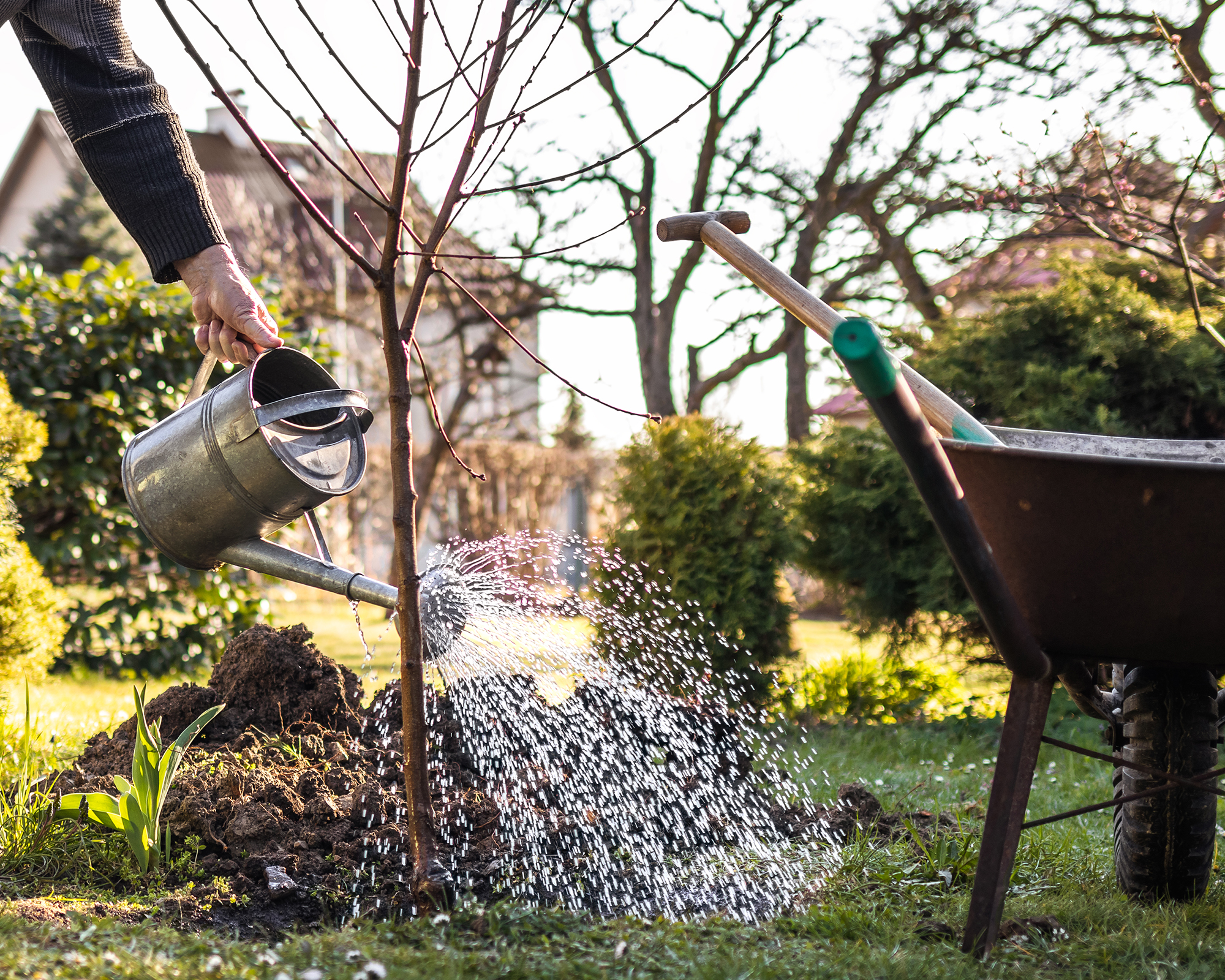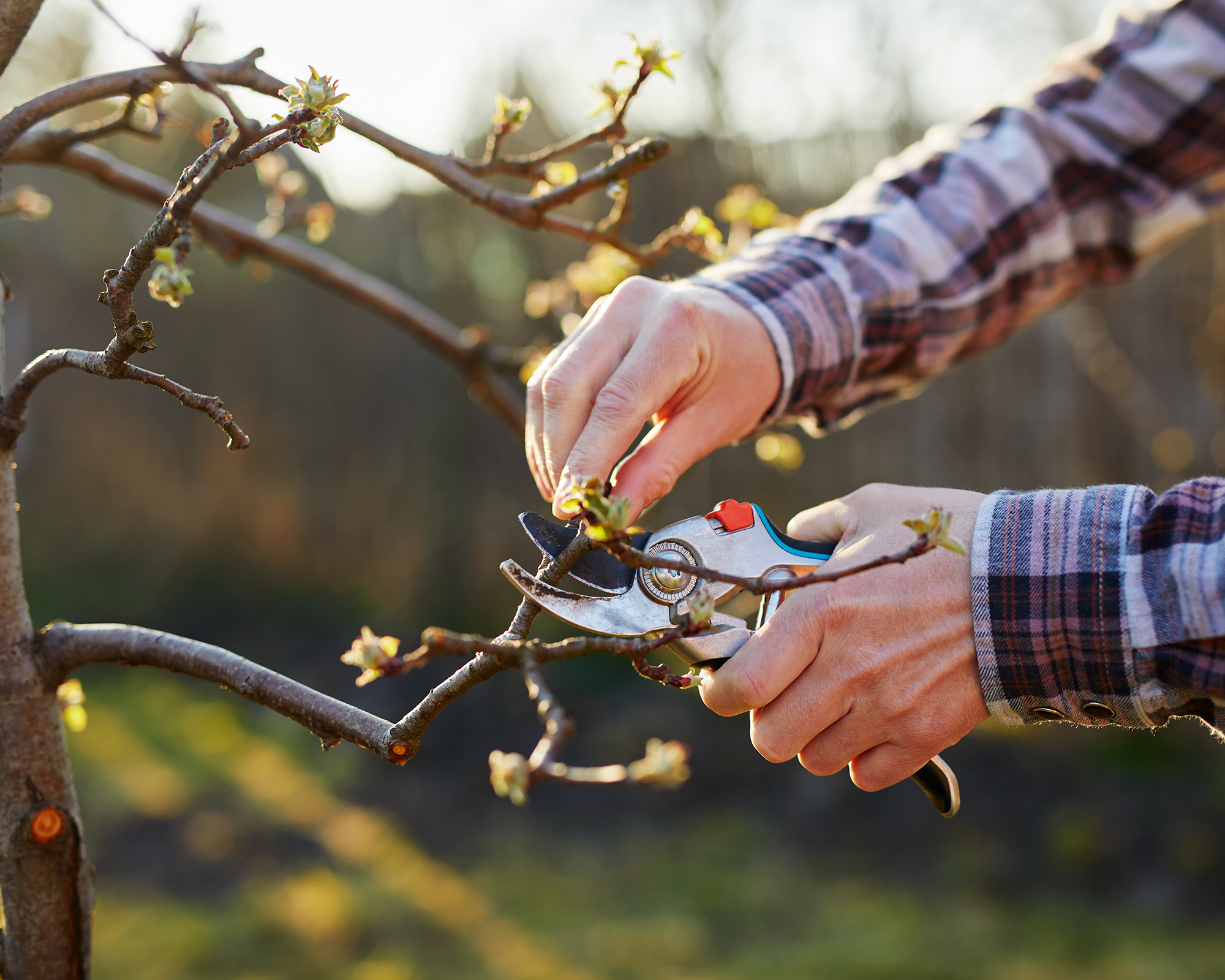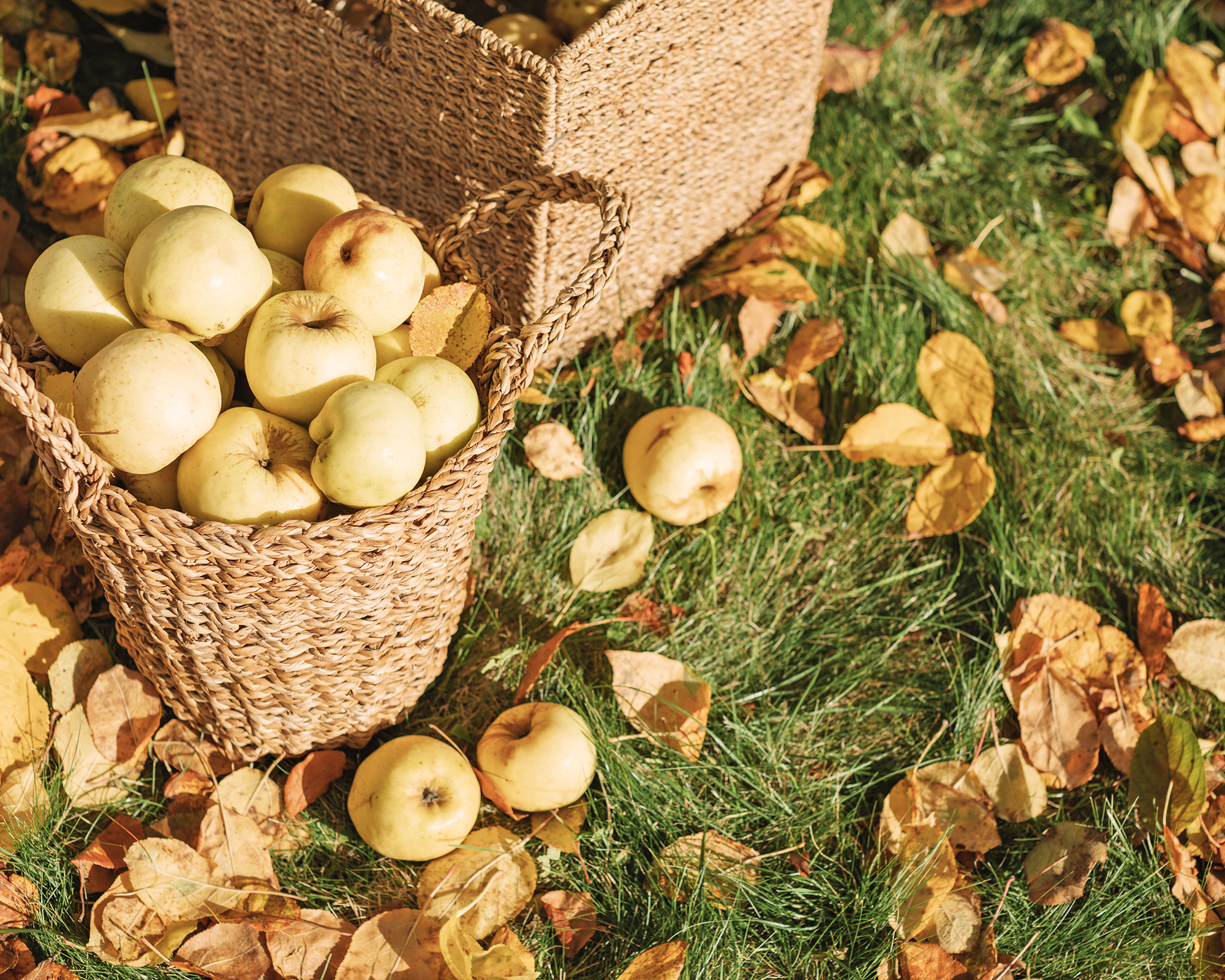6 Fruit Tree Care Mistakes To Avoid This Fall – Expert Issues Winterizing Warning
Prepare your fruit trees for winter, and get ready for a thriving growing season next year, with these top fall care mistakes to avoid.


As the fall fruit harvest nears its end and the leaves begin to turn and fade, fruit tree owners may think it's time to let nature take its course and prepare their trees for winter dormancy. However, this season is crucial for ensuring healthy trees and bountiful harvests in the coming year.
It may seem like a time to wind down, but fall is actually one of the most important periods when growing fruit trees. While winterizing fruit trees should form an essential part of your fall garden to-do list, common mistakes during these months can lead to serious setbacks.
We asked fruit tree expert, author, and founder of Orchard People, Susan Poizner to share her insights on the top mistakes people make when caring for fruit trees in the fall – and how to avoid them.
Whether you have a single apple tree in your backyard or a mini orchard, taking the time to understand and address these seasonal missteps can prevent common fruit tree diseases, pest infestations, and even fruit loss.
From improper fruit tree pruning to neglecting essential soil care, Susan’s tips provide a practical approach to fall tree care that will keep your fruit trees healthy, resilient, and ready to thrive when spring returns. Avoid these common fall care pitfalls and give your fruit trees the best possible chance to flourish.

1. Not Watering
In the fall, fruit tree growth slows, so many people stop watering, unaware of how important hydration is for winter fruit tree survival.
“Trees that are well-watered before winter have cells full of water, which helps insulate those cells and reduces the risk of freezing," explains Susan. “Dehydrated cells are more vulnerable to frost, and when they freeze, they can burst, causing irreversible damage to the trunk and branches."
Sign up for the Gardening Know How newsletter today and receive a free copy of our e-book "How to Grow Delicious Tomatoes".
Continue watering fruit trees until a few weeks before the ground freezes, but stop before freezing temperatures to avoid ice forming around the roots. Consider buying a tree watering system from Amazon for ease.
2. Leaving Roots Unprotected
“Mulching trees is essential for protecting delicate roots from freezing and dying during the winter, and two inches of wood chips or arborist mulch is ideal,” says Susan.
“Lay the mulch in a donut shape a few inches away from the trunk to prevent rot and expand the mulch circle to the edge of the canopy if possible because that is where the essential ‘feeder roots’ are located.”
When mulching trees in the fall, avoid using compost, as it can break down too quickly and stimulate growth when the tree should be going dormant.
“Also, be cautious with thick layers of straw, which can attract rodents that may nest in it and damage your tree by chewing on the bark,” adds Susan.
This organic dye-free wood mulch from Amazon is a great option.

3. Pruning in the Fall
Although it may be tempting to prune fruit trees in the fall, Susan believes this is the worst time to do it. “Pruning in the fall is a bad idea because your tree is getting ready for dormancy, so the wounds won’t heal properly,” she explains. Plus, autumn pruning can trigger tender new growth that’s easily damaged by cold winter weather.
"Spring and summer are much better options. Early spring pruning promotes strong growth in young trees, while early to mid-summer pruning when the tree is focused on fruit development rather than growing new shoots, helps keep trees smaller.
“Skipping fall pruning helps avoid frost damage and reduces the risk of pests and diseases."
Consider these Fiskars pruning shears for your early spring pruning.
4. Applying Commercial Fertilizers
Susan believes that fertilizing fruit trees with strong commercial products can cause long-term damage and that gardeners should take a natural approach instead.
“Commercial fertilizers bypass the natural soil organisms that break down organic matter and feed your trees,” she says. “Using these fertilizers can cause these beneficial microbes to die off, leaving your trees dependent on artificial nutrients. It’s expensive, disrupts the soil balance, and isn’t sustainable.
“Everyone’s soil is different. If you grab a commercial fertilizer like a 10-10-10 mix, it might not be what your soil needs. Adding unnecessary nutrients can actually harm your soil and seriously damage your fruit trees. That’s why I suggest avoiding commercial fertilizers unless a soil test shows a specific nutrient deficiency. In that case, choose the right fertilizer to address just that deficiency.”
Amazon offers several types of soil test kits.
Instead of using commercial products to fertilize fruit trees, try boosting nutrients with a simple annual feeding in early spring with a layer of compost or well-rotted manure. Even better, learn how to compost at home.
“Spread it about two inches thick around the roots of your fruit tree, but keep it away from the trunk to prevent rot,” says Susan. “You can also mulch in the fall, but only after the tree has gone dormant.”

5. Not Collecting Fallen Leaves or Fruit
Leaving fall leaves on the ground has become a popular low-maintenance solution in recent years, with the idea that they will decompose and serve as a natural mulch and fertilizer. However, Susan believes gardeners should think twice when it comes to their fruit trees.
“Fallen leaves can be a good source of nutrients – but only if they’re healthy. If they are diseased or infested with pests, you’re basically giving those pests and disease spores a cosy place to overwinter. In the spring, these pathogens and pests will multiply and return with a vengeance,” she explains. “Many fruit tree diseases overwinter and spread. Learning to recognize these signs allows you to nip them in the bud.
“If you’re not great at spotting and identifying disease symptoms, it’s better to play it safe and pick up any organic matter around your fruit trees.”
Common diseases to look out for include apple scab, rust on apples and pears, fire blight on apples, and black knot on cherries and plums.
Another issue is leaving fallen fruit on the ground. “Fallen fruit attracts pests like wasps and rodents, so cleaning up helps keep these unwanted visitors away,” explains Susan.
6. Leaving the Trunk Exposed
To overwinter fruit trees, Susan believes it’s important to protect their trunks from winter sun damage and from pests.
“Winter sun can damage fruit tree trunks by causing them to expand during the day and contract at night, leading to cracks that allow pests and diseases to enter,” she explains. “You can protect your tree by preparing in advance. One option is to paint the trunk with a 50/50 mix of white latex paint and water which will reflect the sunshine. Alternatively, you can use white spiral tree guards available online, or you can wrap the trunk in kitchen foil for the winter.
“These methods reflect the sun and protect the bark. Remember to remove the plastic guards or foil in early spring, or you might find insects breeding underneath.”

Melanie is an experienced gardener and has worked in homes and gardens media for over 20 years. She previously served as Editor on Period Living magazine, and worked for Homes & Gardens, Gardening Etc, Real Homes, and Homebuilding & Renovating. Melanie has spent the last few years transforming her own garden, which is constantly evolving as a work in progress. She is also a passionate organic home grower, having experimented with almost every type of vegetable at some point. In her home, Melanie tends to an extensive houseplant collection and is particularly fond of orchids.